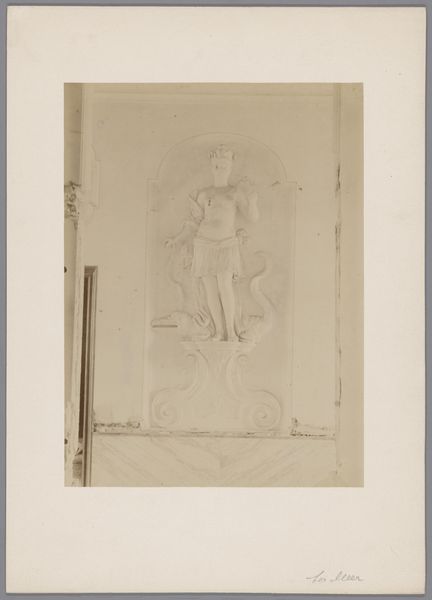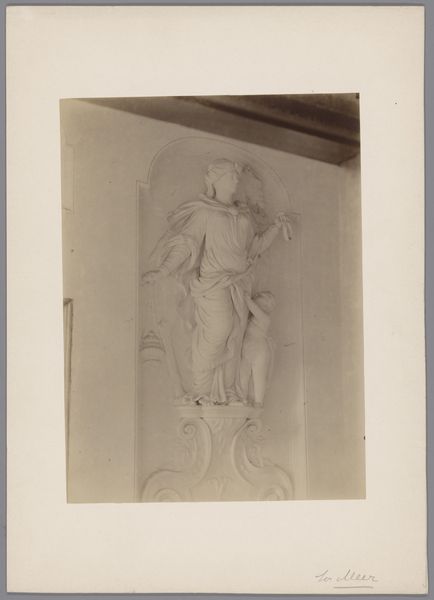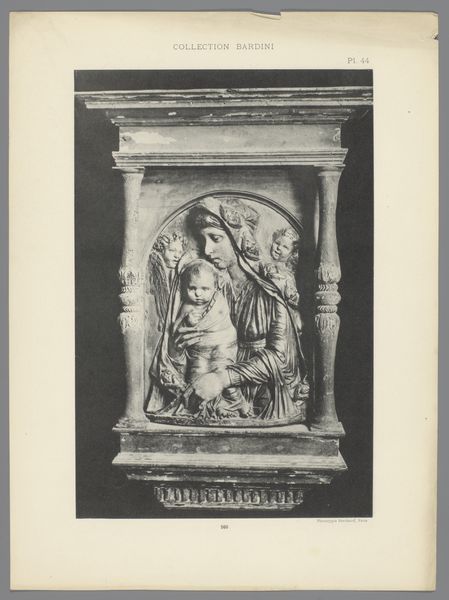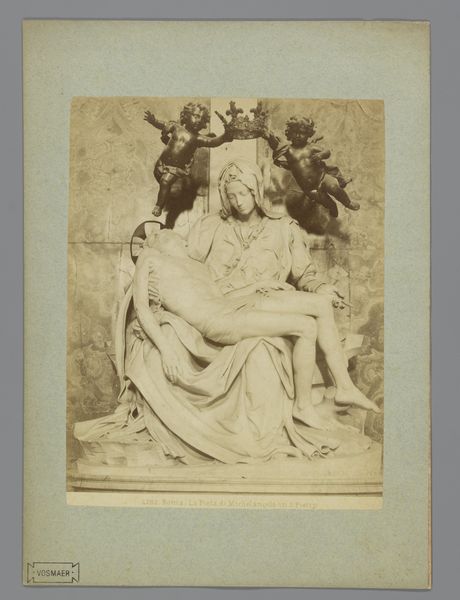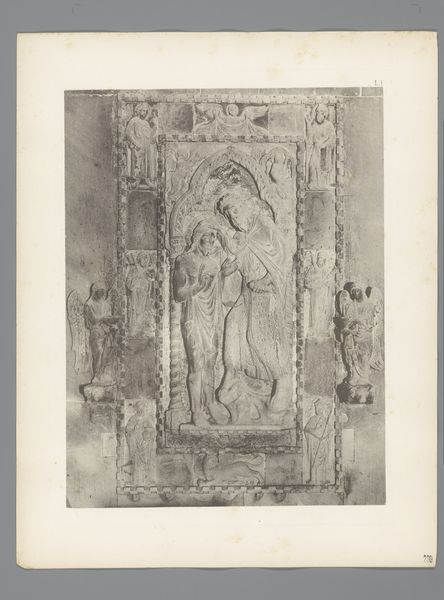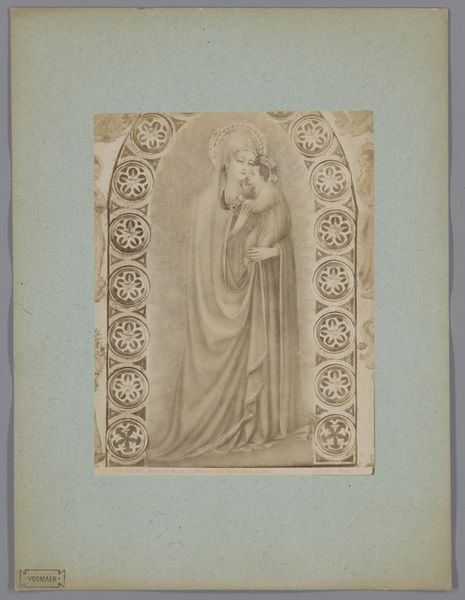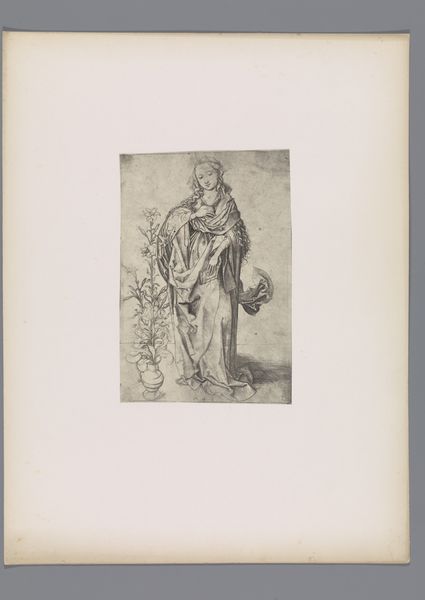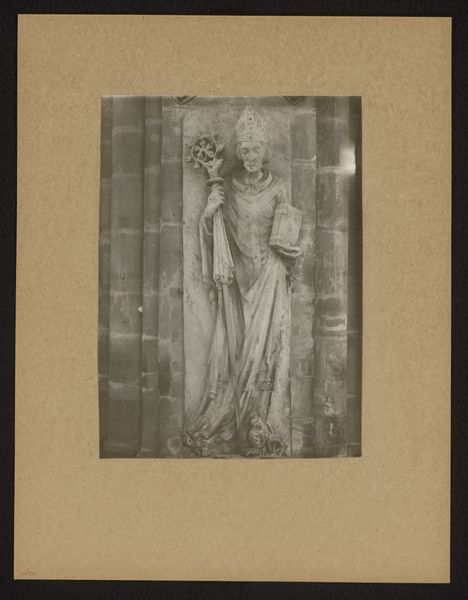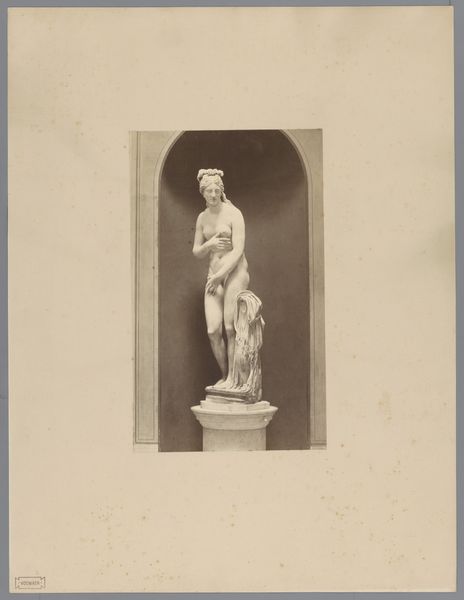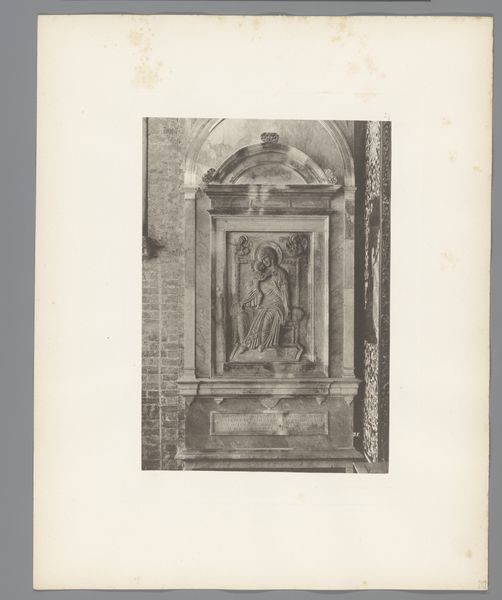
Beeld van een vrouw met een spiegel in het Huis ter Meer te Maarssen c. 1903
0:00
0:00
Dimensions: height 230 mm, width 170 mm
Copyright: Rijks Museum: Open Domain
Editor: This photograph, taken around 1903, captures "Beeld van een vrouw met een spiegel in het Huis ter Meer te Maarssen," depicting a statue of a woman with a mirror. I find the photograph's subdued tones quite striking. What’s your perspective on it? Curator: Well, placing this photograph within the context of monument conservation reveals layers of historical meaning. Photographs like this from the early 20th century played a critical role. These were tools used in preserving architectural heritage and disseminating ideas about national identity. Editor: So it's less about art and more about… documentation? Curator: Exactly! The image serves a very practical, political purpose. It asks us to consider which objects and sites society deems valuable enough to preserve and promote. Note how the setting, Huis ter Meer, contributes to the national narrative. Now, does the composition influence its reception and role? Editor: The soft focus and almost romantic light sort of elevate it beyond simple documentation, making the statue look almost ethereal, reinforcing the perceived importance. But this focus shifts once you understand how instrumental the image could be. Curator: Precisely. It’s a negotiation between objectivity and deliberate framing – pun intended! We see this romantic presentation, but it's there for a particular function: to reinforce an image of a national artistic identity in that period. It forces us to reflect on how institutional structures impact how an artwork is presented and what purposes it ends up serving in broader societal schemes. Editor: So, it's not just an image, but also a powerful political act. I now understand the complexity behind seeming simple visual artifacts, thanks. Curator: Glad to have shed some light on the fascinating social function of visual pieces like this photograph!
Comments
No comments
Be the first to comment and join the conversation on the ultimate creative platform.


